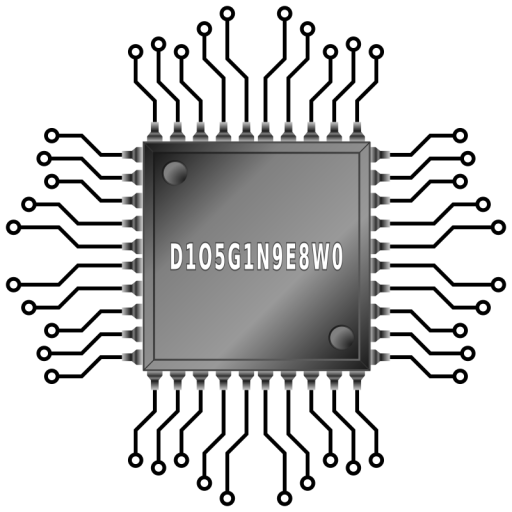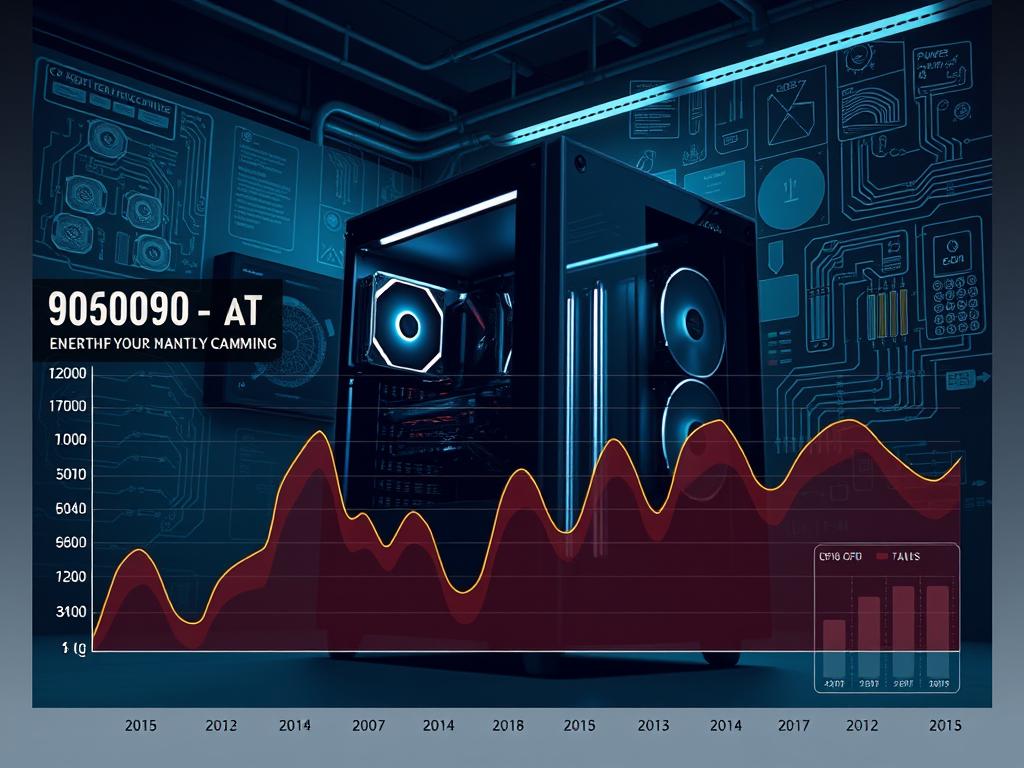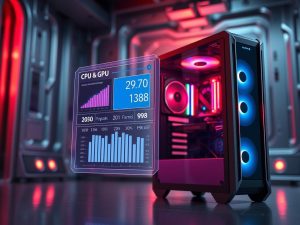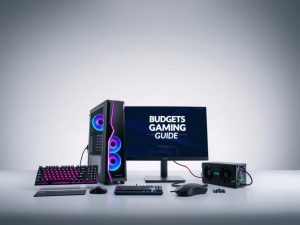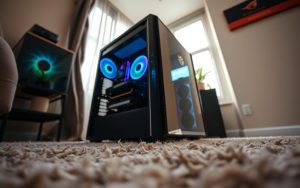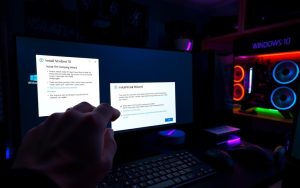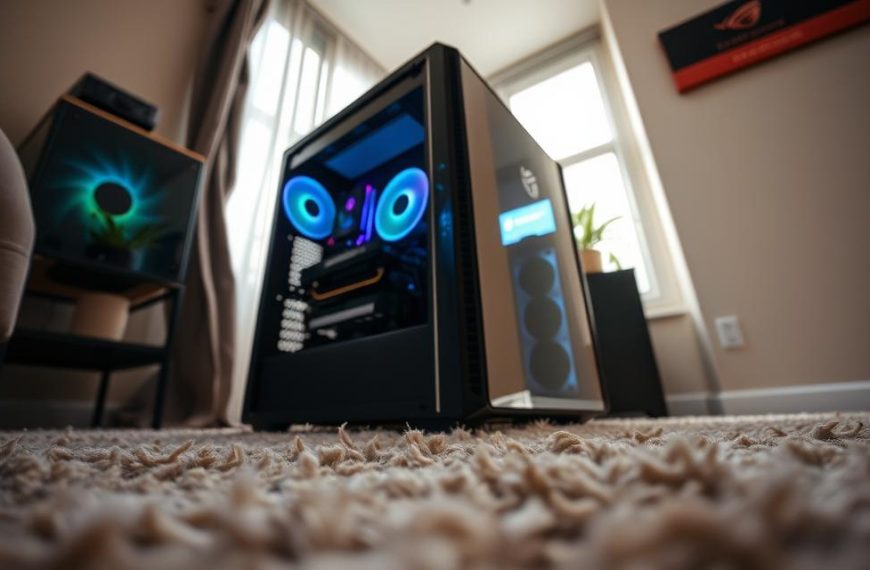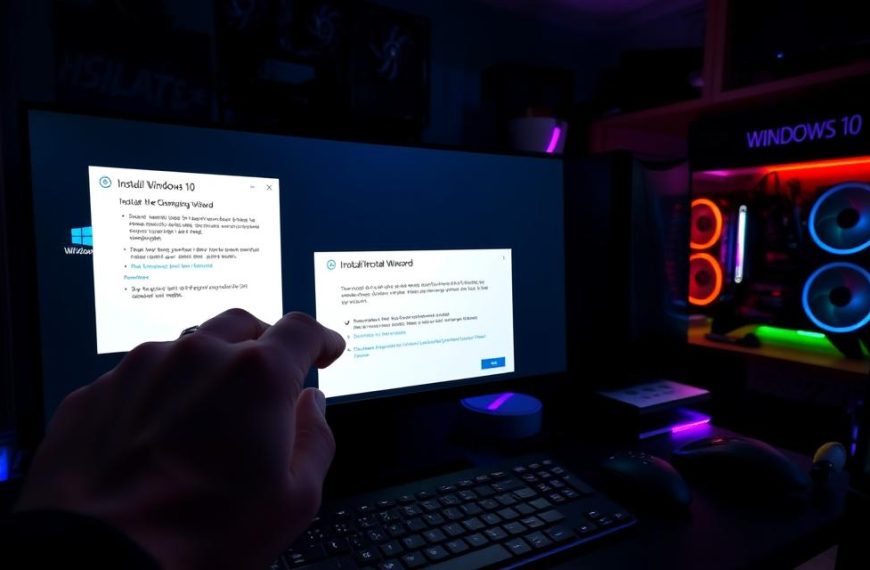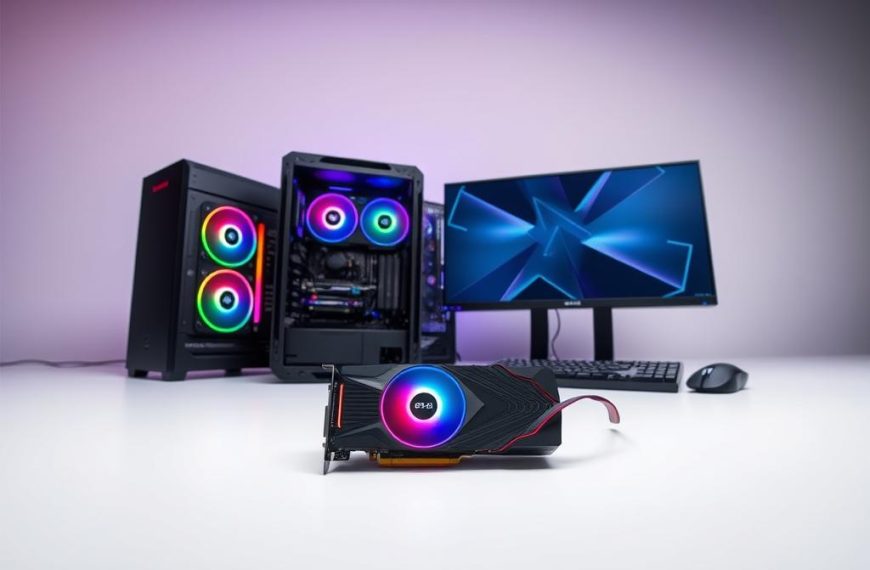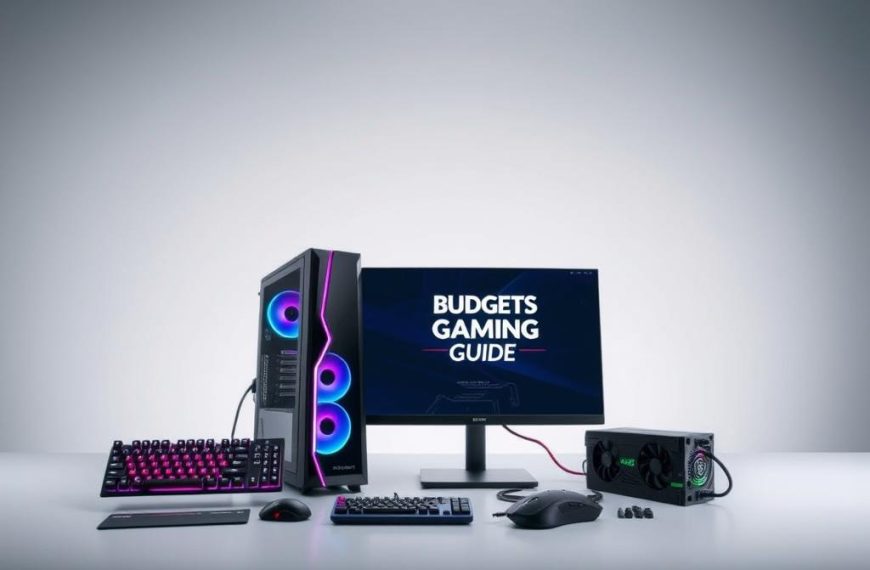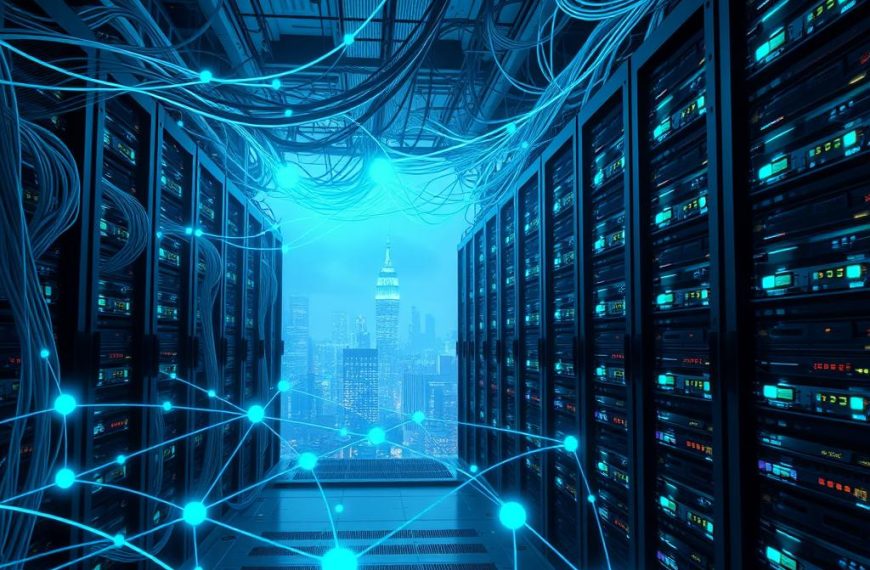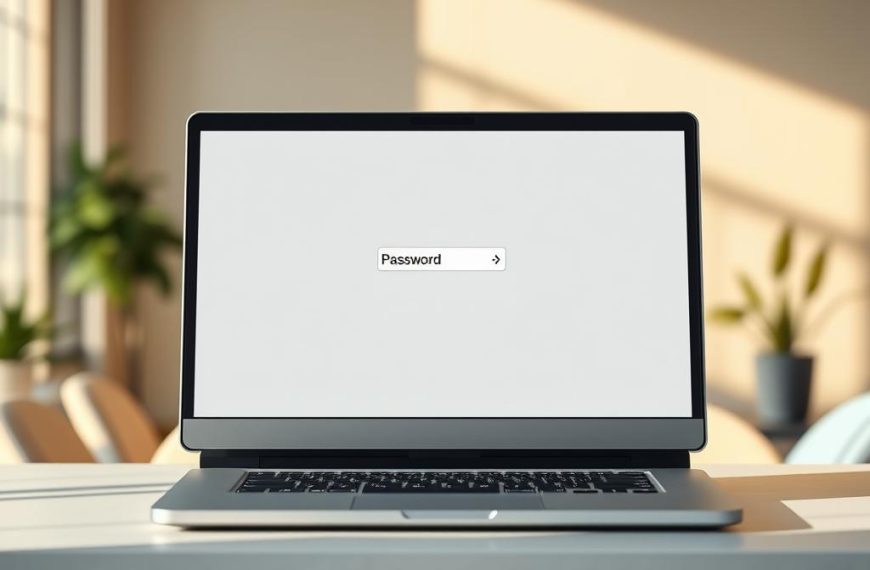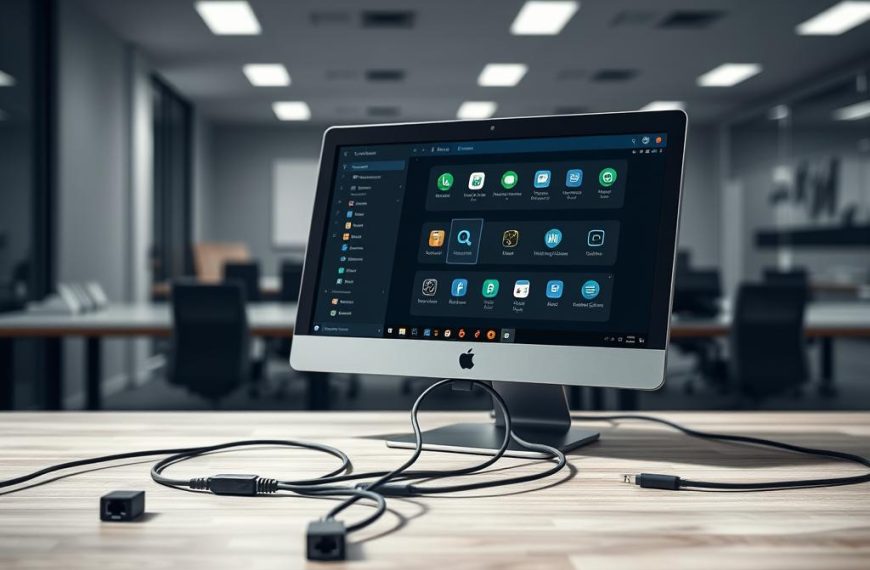Gamers worldwide want to know how much energy their PCs use. A typical gaming PC with a 300-watt power supply uses about 2.4 kilowatt-hours (kWh) daily. This is based on six hours of use.
Monthly electricity usage varies widely for gaming PCs. It depends on hardware, usage patterns, and the games played. Desktop computers usually use between 60 and 250 watts.
Gaming rigs often use more power than standard computers. Tracking monthly usage helps you make smart choices about energy efficiency. You can then optimise performance while managing electricity costs.
Calculating your PC’s energy use isn’t just about numbers. It’s about making sustainable choices in your gaming lifestyle. In the US, electricity rates average 16 ¢/kWh.
Even small efficiency improvements can lead to noticeable savings over time. By understanding power requirements, you can make informed decisions about your setup.
Understanding Gaming PC Power Requirements
Gaming PCs have unique power needs. They use more energy than standard desktops. Their power consumption varies based on the system’s configuration.
Regular desktop computers use 60-300 watts. Gaming PCs, however, can use much more power.
Power Consumption Ranges for Gaming PCs
Gaming setups use different amounts of energy:
- Entry-level gaming PCs: 300-375 watts
- Mid-range gaming systems: 400-500 watts
- High-performance gaming rigs: 600-1000 watts
Critical Components Affecting PC Component Energy Usage
Several hardware parts influence power use:
| Component | Power Consumption Range |
|---|---|
| CPU | 55-150 watts |
| GPU | 25-350 watts |
| Motherboard | 25-100 watts |
| RAM | 2-5.5 watts |
Understanding Power Supply Efficiency
Power supply units (PSUs) are crucial for managing energy use. Efficiency ratings like 80 PLUS Gold ensure optimal power use.
Choosing the right power supply prevents issues. Most users need 500-550 watts. High-performance systems might require 750-1300 watts.
For more details on gaming PC energy use, visit this link.
How Much Energy Does My Gaming PC Use a Month
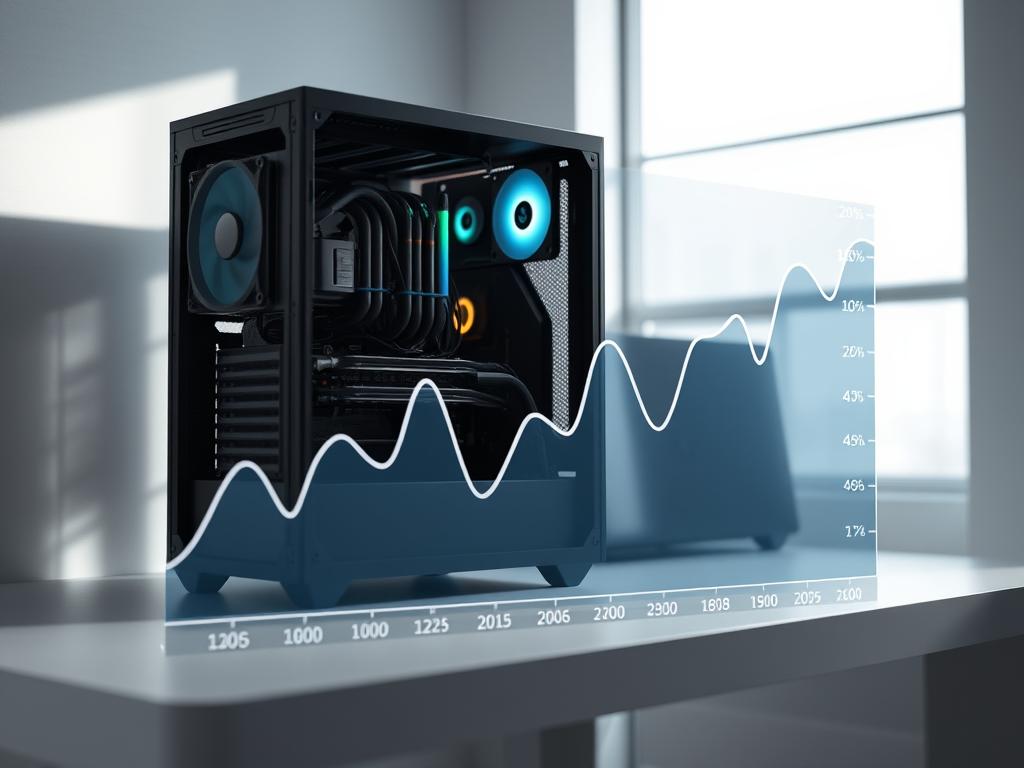
Gaming PCs can be power-hungry devices. Their energy consumption varies based on setup and gaming habits. Let’s explore the fascinating world of monthly gaming PC energy usage.
Here’s a breakdown of PC electricity consumption:
- Average monthly energy usage: 12.2 kilowatt-hours
- Power consumption range: 300-500 watts
- Daily energy consumption: Approximately 2.4 kWh
Your gaming rig’s energy appetite depends on several factors. Hardware configuration plays a crucial role. Daily usage patterns affect total consumption.
Specific components like GPU and CPU greatly influence power draw. High-performance gaming PCs can use up to 500 watts during intense gaming sessions.
- Hardware configuration plays a significant role
- Daily usage patterns impact total consumption
- Specific components like GPU and CPU dramatically influence power draw
This translates to roughly £20.72 in annual electricity costs. Interestingly, your gaming habits directly impact your monthly energy bill.
Pro tip: Implementing power management settings can significantly reduce your PC’s electricity consumption.
Smart gamers can use power-saving techniques to lower their PC’s energy usage. Understanding consumption patterns helps make informed decisions about energy efficiency.
Measuring Your PC’s Power Consumption
Precise measurement is key to understanding your gaming PC’s energy use. Various tools help track power usage accurately. Both enthusiasts and budget-conscious gamers can benefit from these methods.
Power Meters: Your Energy Detective
A dedicated wattage meter is essential for measuring PC power consumption. The SURAIELEC Watt Meter, costing about £11, provides real-time electricity usage data.
These compact tools sit between your power socket and computer. They reveal exact energy consumption, making them invaluable for accurate measurements.
- Plug directly into wall socket
- Display instantaneous power draw
- Track voltage and current consumption
- Cost-effective measurement solution
Software Solutions for Energy Tracking
HWiNFO offers software-based power tracking for your PC. It provides detailed insights into power consumption for both CPU and GPU.
- Download HWiNFO from official website
- Install and launch the application
- View current power consumption
- Check minimum, maximum, and average readings
Calculating Real-Time Usage
For the most accurate measurement, use both hardware and software methods. Include both PC and monitor power draw when calculating total system energy use.
Professional energy tracking requires a multi-approach strategy. This ensures you capture all aspects of your system’s power consumption.
Pro tip: Consistent monitoring helps identify energy-intensive components and potential efficiency improvements.
Factors Affecting Gaming PC Energy Usage
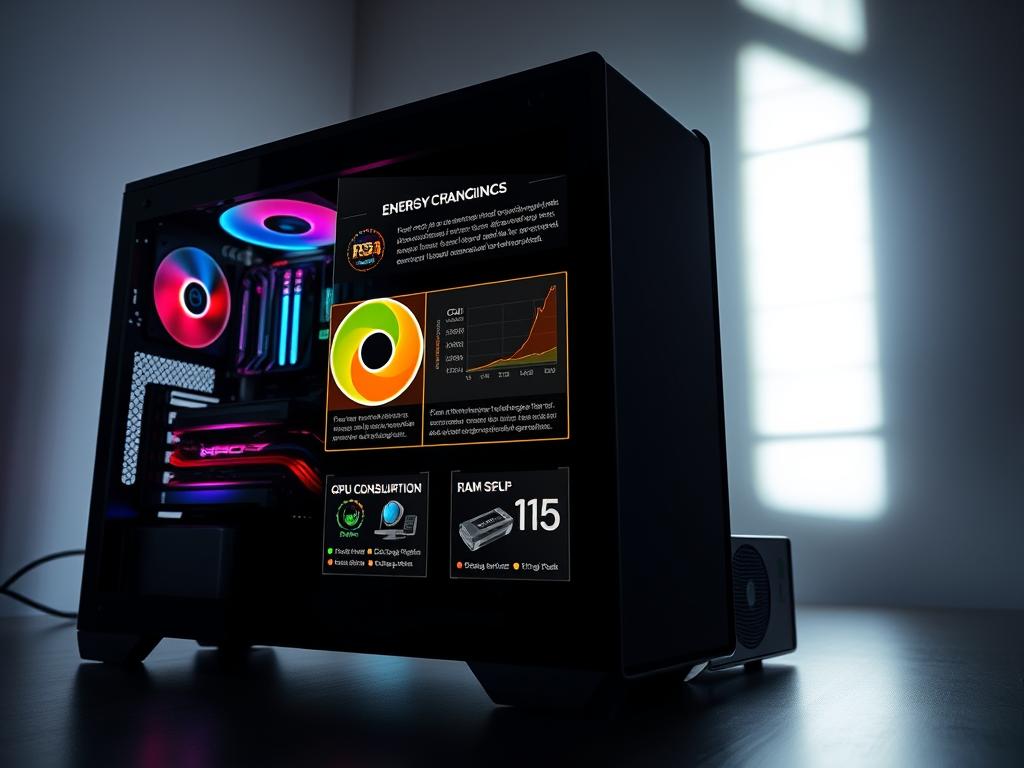
Gaming PC energy efficiency depends on various components that influence power consumption. The complex system of a gaming computer includes multiple hardware elements that affect its energy use.
Key factors impacting PC power consumption are:
- Graphics Card Performance: High-end GPUs like the NVIDIA GeForce RTX 3080 can consume up to 320 watts under intense gaming loads
- Processor Capabilities: CPUs can draw between 95 to 250 watts during demanding tasks
- Cooling Systems: Advanced cooling solutions require additional electrical power
- Hardware Age and Efficiency: Older components typically consume more energy
Gaming habits greatly affect a PC’s energy consumption. Long gaming sessions push components to their limits, increasing power draw significantly.
Background activities, system updates, and game downloads can also use energy during idle periods. Smart power management can help optimise gaming PC energy efficiency.
Choosing components with high energy ratings and using power-saving modes can reduce electricity use. Keeping hardware clean and dust-free also helps lower unnecessary power consumption.
A well-maintained gaming PC can balance high performance with energy-conscious operation.
Cost Analysis and Energy Rates
Knowing your gaming PC’s electricity costs is vital for budget-savvy gamers. Energy rates vary greatly across regions and usage patterns. This affects the overall expenses of your gaming setup.
Electricity prices differ widely across the United States. This table shows the rates and monthly costs for gaming PCs in various states:
| State | Electricity Rate (¢/kWh) | Monthly Gaming PC Cost |
|---|---|---|
| California | 22.00 | $2.68 |
| New York | 20.59 | $2.51 |
| Texas | 12.56 | $1.53 |
| US Average | 14.19 | $1.73 |
Monthly Cost Calculations
To work out your gaming PC’s electricity costs, consider these factors:
- Average electricity usage for gaming computers: 200-500 watts
- Monthly consumption for 8 hours daily: 12.2 kilowatt-hours (kWh)
- Cost formula: Power (kW) × Time (hours) × Energy Price ($/kWh)
Annual Energy Expenditure Estimates
For a typical gaming PC used 8 hours daily, you can expect:
- Yearly electricity consumption: 146 kWh
- Average annual running cost: $20.72
- Potential savings through energy-efficient practices
Strategic energy management can significantly reduce your gaming PC’s electricity expenses.
Smart energy strategies can help gamers lower their electricity bills. This approach also reduces their impact on the environment. It’s a win-win for both your wallet and the planet.
Conclusion
Optimising gaming PC energy use goes beyond saving money. It’s about responsible tech use. Gamers can now cut electricity costs through smart hardware choices and energy management.
Power consumption varies greatly across computer types. Gaming PCs use 200 to 500 watts, while standard desktops use 70 to 200 watts. Using sleep mode and unplugging unused peripherals can significantly reduce electricity usage.
Choosing ENERGY STAR components and monitoring power use are smart strategies. Understanding local electricity rates helps gamers make informed decisions. These methods reduce environmental impact and offer long-term financial benefits.
Modern gamers can create high-performance setups that are energy-conscious. By making deliberate choices, you can enjoy immersive gaming whilst keeping costs down. This approach balances technological prowess with environmental responsibility.
